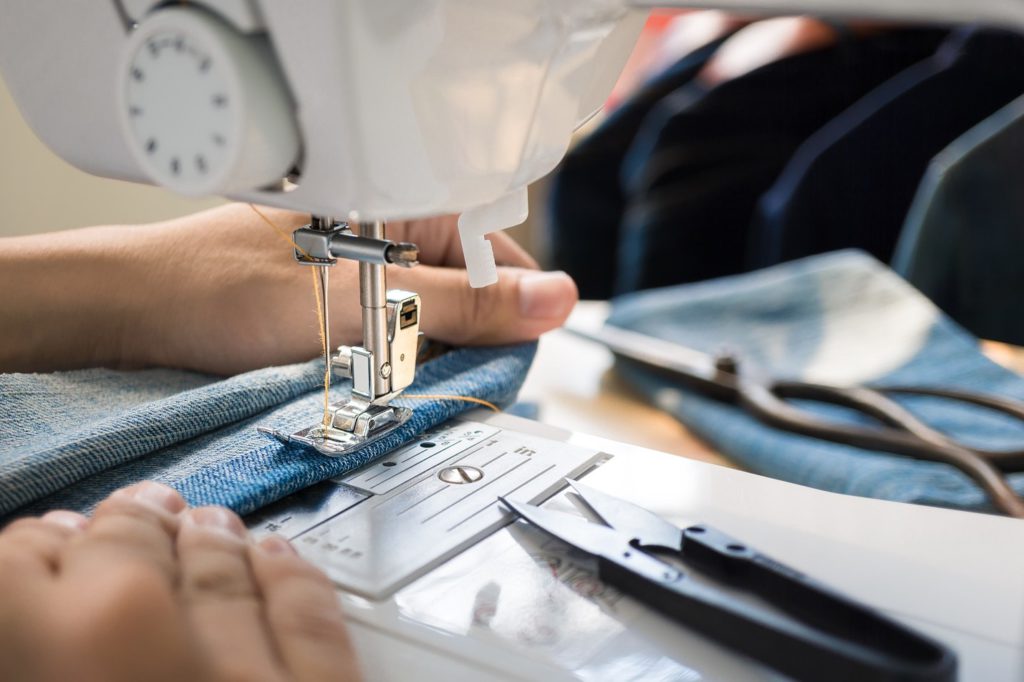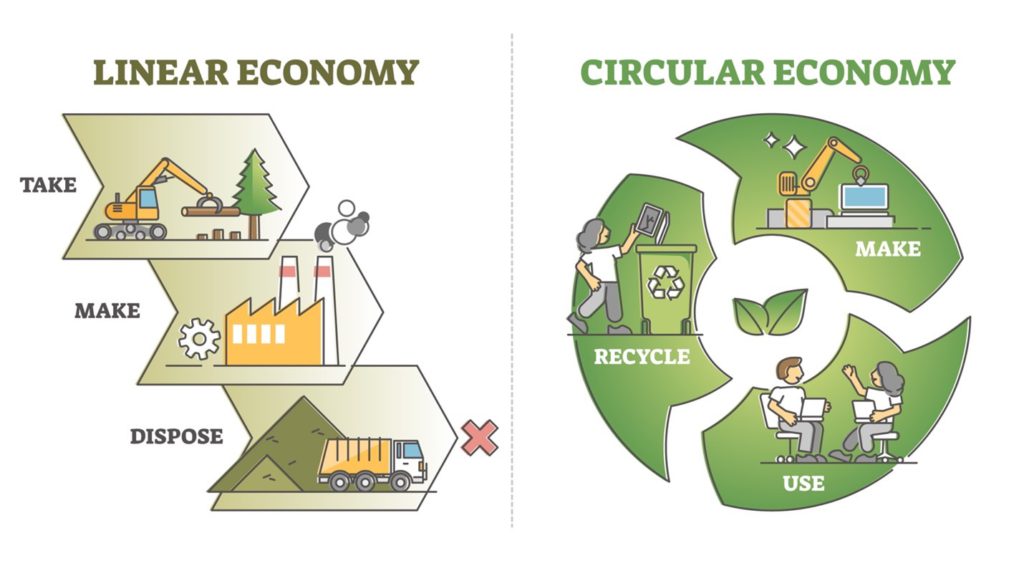
A Circular Solution
By: Lexi Schaffer
Reuse and recycle. Most of us have heard these words repeated countless times, usually regarding cans and bottles. But what if this mindset could be applied to a wider range of items? This is already happening with an approach called the circular economy, and it’s up to us to make this strategy successful. But what actually is the circular economy, and what can we do to help?

The current economy of most of the world is wasteful, costly, and inefficient. Materials are taken directly from the Earth and turned into products that are eventually disposed of, and then new materials are needed. Known as the linear economy, this creates growing landfills of useless waste, and presents companies the challenge of constantly finding and converting new resources. The world’s economy as we know it is harmful to both us and the environment. This process may seem inevitable, but a strategy has been developed to combat it.
The circular economy can be separated into two sections: the technical cycle and the biological cycle. The technical cycle involves items that are not biodegradable, such as plastics and metals. Instead of being discarded at the end of their lifespans, products made from these materials are put back into the economy. This can be done through physical recycling, chemical recycling, and even simply repairing or selling items instead of throwing them away. If executed correctly, this approach to the technical cycle will significantly reduce landfill waste, as well as save companies the time, energy, and pollution that goes into acquiring new materials.
The biological cycle concerns products like food, clothing, and wood, items that can be safely returned to the Earth to benefit the environment. By composting biodegradable items, we can not only reduce our environmental footprint, but we can also help the soil regenerate and regrow more plants.
So, if the circular economy is so beneficial, why doesn’t everyone already use it? The catch lies in the manufacturing process. Many companies unintentionally or carelessly produce products that simply cannot be reused. For example, some clothing manufacturers fuse cotton, a biodegradable material, with nonbiodegradable substances, preventing it from returning to the Earth. Similarly, cell phone companies make their products difficult to disassemble and cycle back into the system, causing the circular economy to be a difficult process to which profit-seeking brands are unwilling to commit.

Efficiency is one of the most important principles of the circular economy. It places an emphasis on feeding materials back into the economy while wasting as little resources and energy as possible. Of course, this can be done through recycling, but there are other methods that are even more efficient. For example, repairing items allows them to be reused without wasting the energy of separating and repurposing the materials. Fixing clothing, cellphones, and other commonplace items instead of replacing them preserves invaluable natural resources and prevents unnecessary pollution.
Another way for individuals to support a circular economy is to consume less materials. People in wealthy countries consume around 10 times as much materials as those in poorer countries (see World Resources Institute for more details). This alarming statistic portrays the excess of items that are flowing through the economy. By reducing the amount of things we buy we can decrease waste and pollution levels and help the economy transition from linear to circular in a controlled environment. We can start by procuring less clothing, plastics, and other low-value items that are consumed in excess.
While reducing our consumption is crucial to supporting a circular economy, how we consume is just as important. When we choose where to buy from, we are not only picking a brand – we are also supporting a certain method of manufacturing and a specific material. For example, when people buy from fast fashion brands they are inadvertently contributing to an environment where clothes are produced wastefully and usually end up in landfills. Purchasing goods from organic, sustainable brands supports an economy that protects the environment.

Our consumption habits define the economy, but some of the fundamental faults of the linear system lie beyond our influence. In order for a circular economy to succeed, we also need to inspire change on a systematic level. Manufacturing companies tend to design items that wear out quickly to encourage consumers to buy another one of their products. This contradicts the initiative of the circular economy and wastes precious materials and resources. If companies profited off of the continued use of their products instead of the amount of products they sell, they would be encouraged to design items that last and can be fed back into the system. We can promote this kind of economy by supporting laws that invest in recycling infrastructure and put pressure on big brands to produce higher quality products. For example, the proposed European Green Deal (see European Commission for more details) aims to change the European economy into a sustainable system that emits far less greenhouse gasses. Recent progress has also been made in the United States with the passing of the Inflation Reduction Act (see Forbes for more details), and more laws are in the making.
We have made headway in ushering in a circular economy but transforming such a large and complex system takes time and dedication. It is a slow process, one that requires attention and action from a wide array of people and companies. This may seem daunting, but the best way to tackle this issue is to start small. Every little step taken makes an impact, and collectively, we can begin building a more sustainable economy.
Sources:

